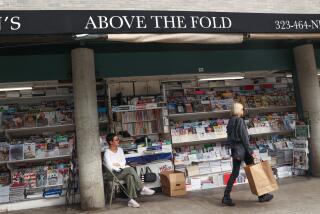Court Reporter Will Be Missing in Test of Electronic Recording of Proceeding
- Share via
Someone will be missing Monday morning when court is called to order in Family Law Department 2B of Los Angeles Superior Court.
The missing person will be the court reporter.
Under an experimental program three years in the planning, the reporter will be replaced by a tape recorder in an effort to see if electronic recording is a feasible alternative to the human touch.
“We’re having a great deal of difficulty keeping all our courts staffed with court reporters,” Frank Zolin, executive officer of the Superior Court, explained Friday. “And we have a need to expand . . . to get additional judges. We were concerned about hiring additional numbers of reporters to staff additional courtrooms.”
The experiment--authorized under a state law that took effect in January and a resolution by the Los Angeles County Board of Supervisors--is also aimed at making it more convenient for lawyers and others to obtain records of court business.
Tapes Cost $10
Duplicate tapes of the proceedings can be delivered within a day, and written transcripts will also be available, Zolin said. The tapes will cost $10.
“We hope to reduce our operating costs in terms of maintaining a record and be able to give new services to the Bar and litigants,” said Zolin, whose court uses about 300 court reporters.
The court reporters are not so enthusiastic.
“It’s our feeling that a live court reporter is the only court reporter, the only one who can make judgment calls,” said Neil Ferstand, executive director of the California Court Reporters Assn. in Sacramento.
He said court reporters can be more subtle than tape machines in picking up courtroom remarks, especially if several people are talking at once.
“Obviously, we’re not happy about a tape replacing any court reporter,” Ferstand said.
Expert on Hand
The family law courtroom, first in the state to try the substitution, will be equipped with four microphones, one for each attorney, one for witnesses and the fourth for the judge or court commissioner. The microphones will feed into a master channel and individual channels to enable listeners to determine the speaker’s identity. An electronics expert will be on hand to make certain there are no malfunctions.
Eventually, Zolin said, the program will be expanded to four other family law courts.
“It’s an experiment, and we’ll have to see how it goes,” he said. “But we’re optimistic about it.”
More to Read
Sign up for Essential California
The most important California stories and recommendations in your inbox every morning.
You may occasionally receive promotional content from the Los Angeles Times.













